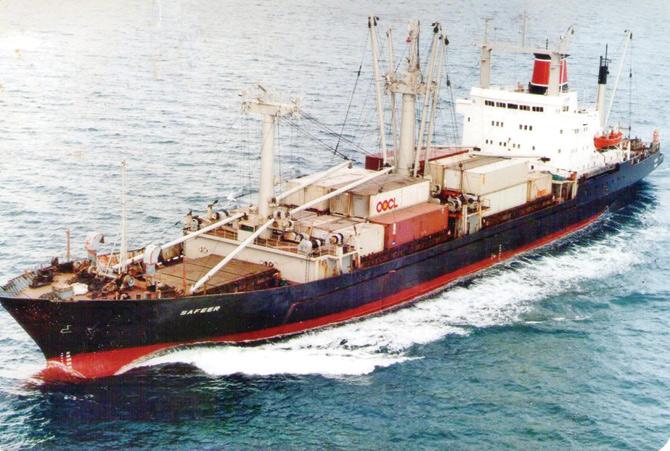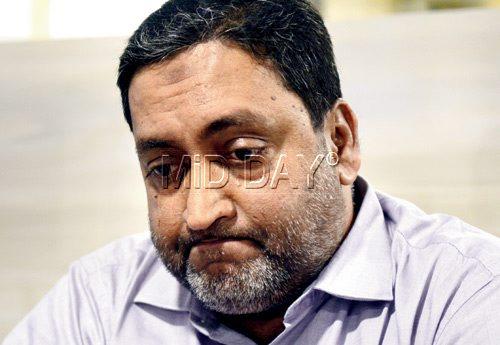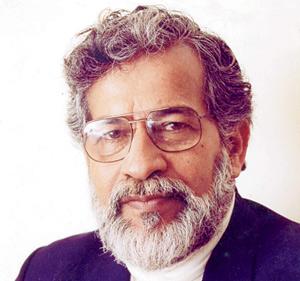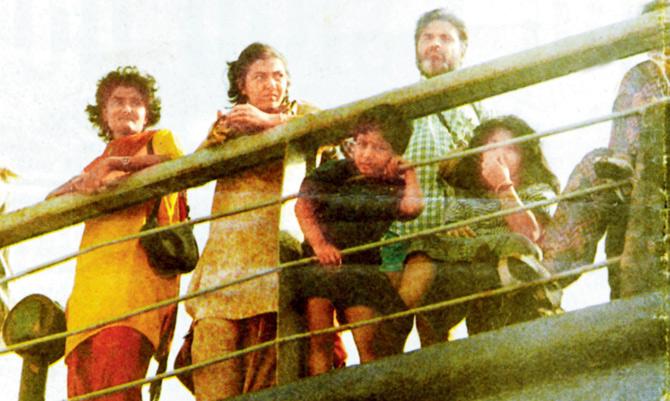Seaman Fareeque Kapdi was 17 when MV Safeer, the cargo ship he was on, docked in Kuwait on July 31, 1990; he recalls the crew braving bombs and missiles to bring 722 Indians to safety

MV Safeer
The historic evacuation of 1.7 lakh Indians from war-torn Kuwait in 1990 is once again in the limelight, thanks to the recent release 'Airlift', but not many may know about another rescue operation in which 722 refugees sailed to safety on the Indian cargo ship, MV Safeer.

Ship over troubled waters: MV Safeer, with 22 crew members, ferried refugees from Shuwaikh Port in Kuwait to Dubai after the Iraqi invasion
It was eventually the evacuation of the rest of the Indian population by Air India that won a mention in the Guinness Book of World Records, but MV Safeer’s rescue operation was equally unprecedented, as never before — or after — were so many passengers carried on a cargo ship that had been fitted up for just 30 people. The ship's crew of 22 are among the many unsung heroes of the international crisis that struck that year, when Iraq invaded and occupied Kuwait.
Also read: How Air India's 1990 'airlift' created a Guinness World record

Indian refugees express their gratitude after the ship docked in Dubai. Pic courtesy/Khaleej Times
Flashback
Fareeque Dilawar Kapdi was just 17 at the time, and had barely spent a year exploring the high seas on MV Safeer when it docked at Kuwait’s Shuwaikh Port in the evening of July 31, 1990. Fareeque and his senior, Ashok Patel, were supervising as the ship's cargo of rice (from Kandla, Gujarat) was offloaded. Work went on smoothly, and no one paid mind to the booming sounds from the city. It was after the sailors went to sleep in their cabins around 6 am that they were disturbed by loud banging on their doors. The war had found them.

Fareeque Kapdi. Pic/Bipin Kokate
"Loud thuds on the doors of our cabin woke me up. When we opened the doors, soldiers stormed in and put their guns to our foreheads. Heavily armed men took us to the beach and others took control of the ship,’’ recalled Fareeque.
Information was scarce and they were held on the beach for three hours before they learnt that Iraqi forces had pulled off a coup in Kuwait. They waited in fear, uncertain for their life, until the soldiers realised they were Indians. "Their stance softened; some Iraqi officers went up the ship knowing it would have food. The soldiers took us to the ship as well, but did not allow us free movement," said the Mumbai resident, who has since scaled up the career ladder to become captain of a very large crude carrier.

Captain V R Kekobad, owner of the MV Safeer was in Mumbai when the cargo ship docked in Kuwait, his partner Captain Ibrahim Modak (below), was manning the company’s office in Dubai. Pic/Bipin Kokate
In September, they attempted the Himalayan task of the first-ever evacuation of Indians from Iraq-occupied Kuwait. Their feat — they carried 722 passengers, including 265 women and children on a cargo ship in a 48-hour haul to Dubai — remains unparalleled to this day.

There was the threat of bombs from the sky, and mines in the waters beneath, but when they learnt that the Indian government was looking for a vessel to carry refugees to safety, the ship’s owners proposed that MV Safeer could do the job. It was after Safeer’s successful journey between September 4 and 7, 1990, that the Indian authorities embarked on its air evacuation exercise.
Back in Mumbai
At the time, one of the ship’s owners and director of Oyster Marine Management, Captain V R Kekobad was in Mumbai. "We did not know anything about Kuwait’s invasion until our agent there, Frank Rozario, called me to say that he had seen Iraqi troops marching on the streets. That was in the morning of August 2, 1990. He told me he didn’t know what was happening," said Kekobad (64), who has been living in Australia for the past 16 years.

Passengers were emotionally charged as they waited to disembark at Dubai. Pic courtesy/Khaleej Times
Kekobad, who is currently in Mumbai to see his ailing father, said it was on the news that he learnt of the Iraqi invasion. Meanwhile, the other owner, Mumbai resident Captain Ibrahim Modak, who was manning the company’s Dubai office, was also watching the news horror-struck.
"The first thing that came to our (Kekobad and Modak) mind was to arrange for the safe evacuation of our crew. By that time, their families had become immensely worried and asked us what we were doing to get their boys home safely," said Kekobad.
Communication lines with the ship’s master captain, Z A K Juwale, had gone kaput, and the only way to reach his people was through government agencies in India, Dubai and Kuwait.
"All of us in the company, including Capt Modak’s son Haneef (who now runs his late father’s shipping business from Mumbai), decided that we must not leave our crew to the mercy of foreign forces. Mind you, we could have sat comfortably at home and left the crew members to fend for themselves, as our ship was insured for very handsome amount," added Kekobad.
Kekobad and Haneef tried to persuade officials in the shipping, defence and external affairs departments in India, while Capt Modak held fort in Dubai, negotiating with authorities there.
Challenges
Being a cargo ship, MV Safeer wasn’t legally allowed to ferry passengers. It was not equipped to facilitate a safe journey for more than 30 passengers — which was about the strength of the crew. The ship’s owners (which, like most vessels, was registered in Panama) would have faced penal action in case of a mishap onboard. However, even after Safeer was given a green signal, the crew faced many more tests.
The immigration office in the port area had been ransacked but the crew had befriended Iraqi forces and managed to get their passports back. Once all clearances were in place, Safeer’s crew started working to create makeshift facilities that the refugees could use during the short haul from Kuwait to Dubai.
It was of paramount importance to arrange for life jackets. Kekobad convinced the Indian government to deliver some 400 life jackets in Kuwait. "It wouldn’t have been possible without help from Indian and Iraqi authorities. We could pull off this exercise only because Iraq had great relations with our country," said Kekobad, adding that 14 rafts and additional life jackets were made available locally in Kuwait.
But how were they going to accommodate the swelling number of passengers on a ship that had been fitted up for just 25-30? For one, there were toilets only for 25, no cooking facility and no air-conditioning.
Oil drums were cut and welded to make toilets, and gunny bags were used to create cubicles, said Nazir Mulla, the ship’s second-in-command. "We released sewage directly into the seas. We had ample stock of fresh water from Kuwait. We accommodated passengers after creating space by offloading the rice cargo. Sick passengers were made comfortable in the limited AC area," he added.
Passengers were asked to carry food for 2-3 days, as Safeer didn’t have much to offer. "Despite that, we cooked khichdi for those who didn’t have food with them," said Fareeque, who recalled how the passengers drove to the port and then handed over the keys to their cars to the crew. "They asked us to keep their cars as a reward. I was very young, but I could understand the pain of leaving their hard-earned belongings behind," said the emotional Captain.
When the ship finally docked at Dubai, the passengers were emotionally overcharged while disembarking, recalls second-in- command Mulla. "They thanked us profusely. It was team work that saw us through this tough task," added Mulla.
Airlift has got both brickbats and bouquets, but Captain Kekobad wishes his mentor late Captain Ibrahim Modak was alive today to see how the Air India evacuation is now getting recognition, years after they did their own bit to bring the Indians to safe harbour. Kekobad insisted that his crew did not charge a dinar from the Indians for the journey.
Grateful government
Kekobad’s prized possession is a letter of recognition he got from the then external affairs joint-secretary, K P Fabian. The letter reads: ‘This is to confirm that Government of India did not pay your company any amount towards evacuation of Indian nationals who were carried aboard MV Safeer. We are indeed grateful to you for having carried safely over 700 Indians from Kuwait under Iraqi occupation to Dubai.’
 Subscribe today by clicking the link and stay updated with the latest news!" Click here!
Subscribe today by clicking the link and stay updated with the latest news!" Click here!









